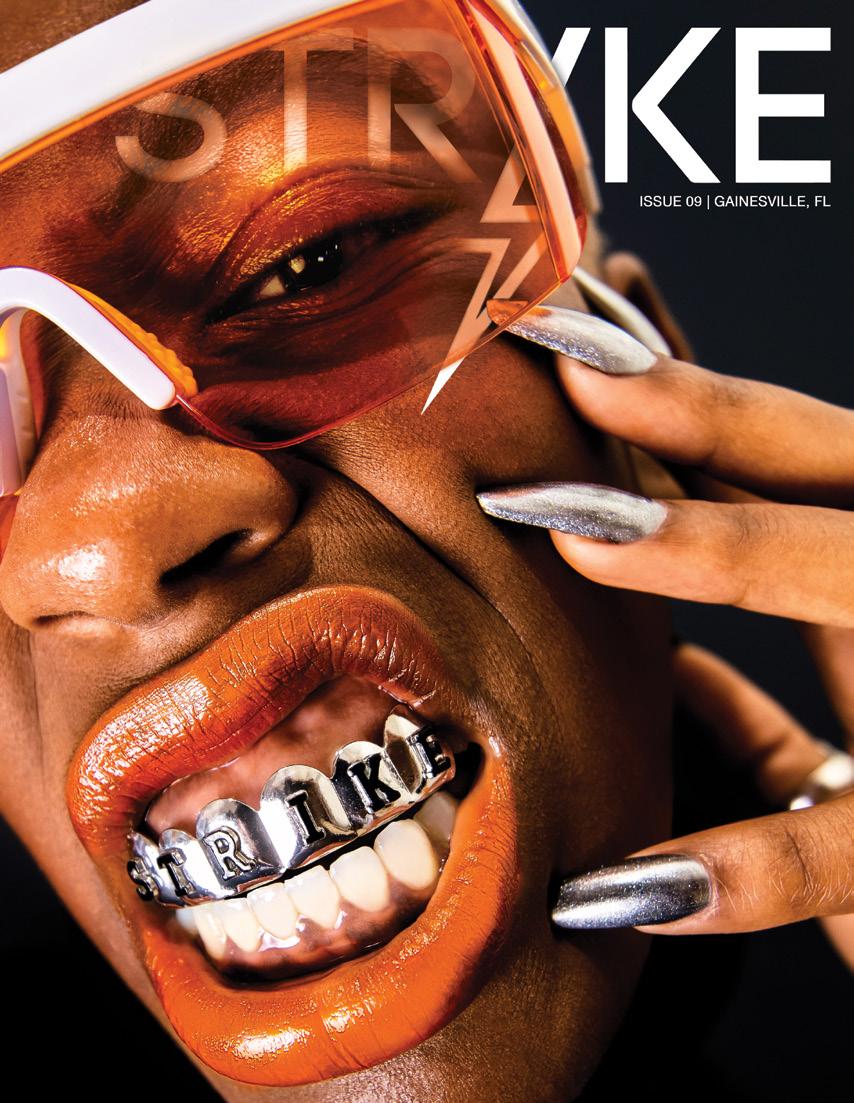
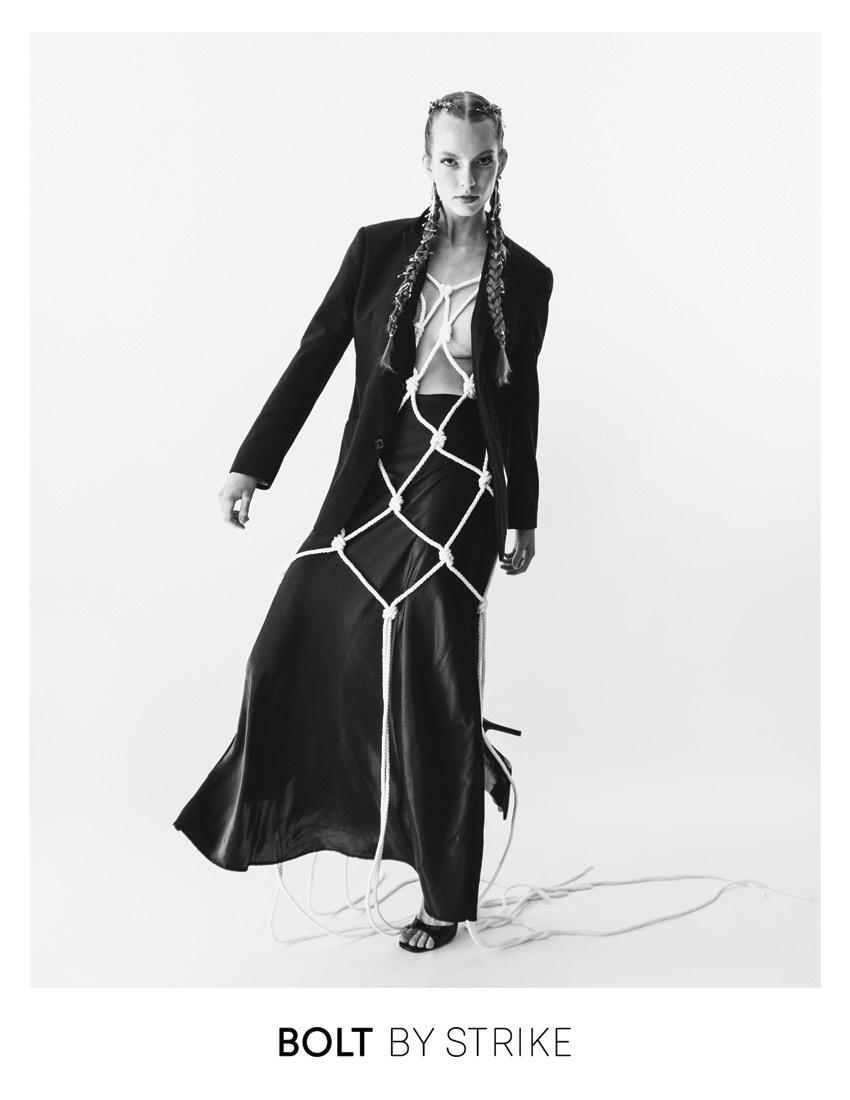 Model Caroline Sachse
Fashion Aliya Delcastillo
Photography Natasha Badal, Stephanie Garcia
Model Caroline Sachse
Fashion Aliya Delcastillo
Photography Natasha Badal, Stephanie Garcia
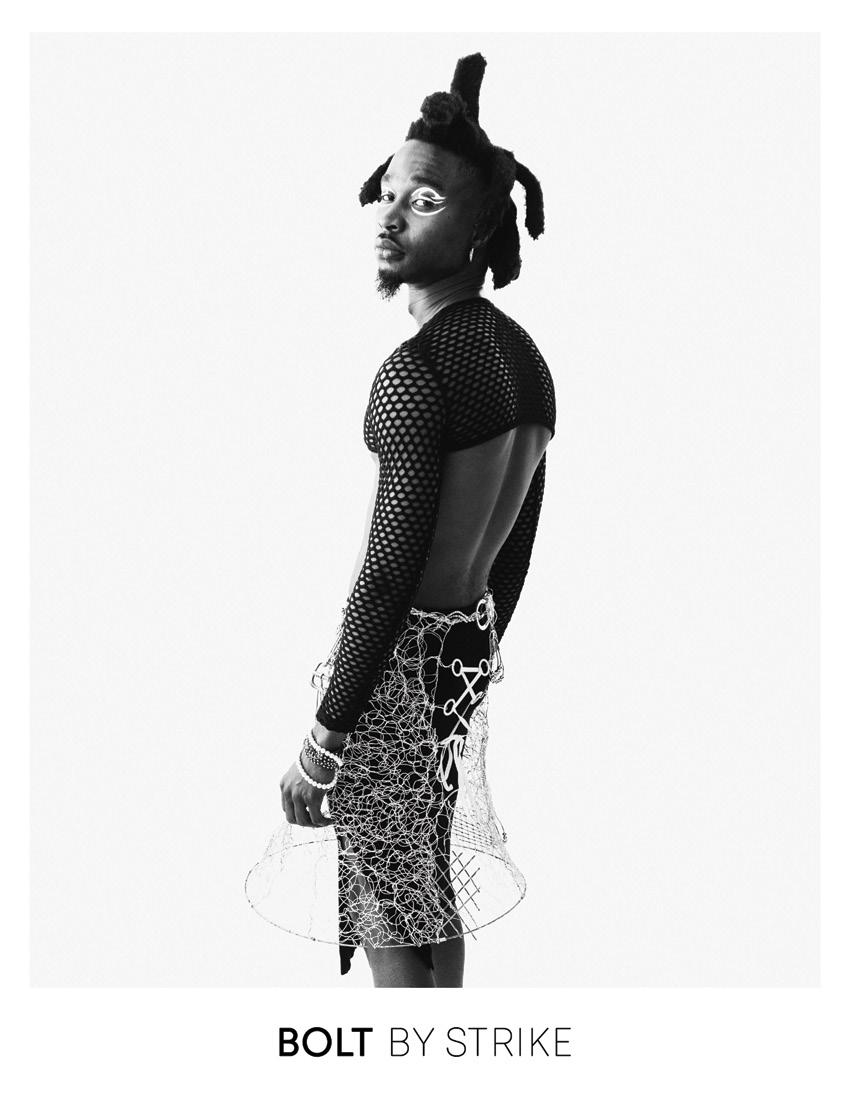 Model July Art
Fashion Mya Genuardi
Photography Annika Thiim
Model July Art
Fashion Mya Genuardi
Photography Annika Thiim
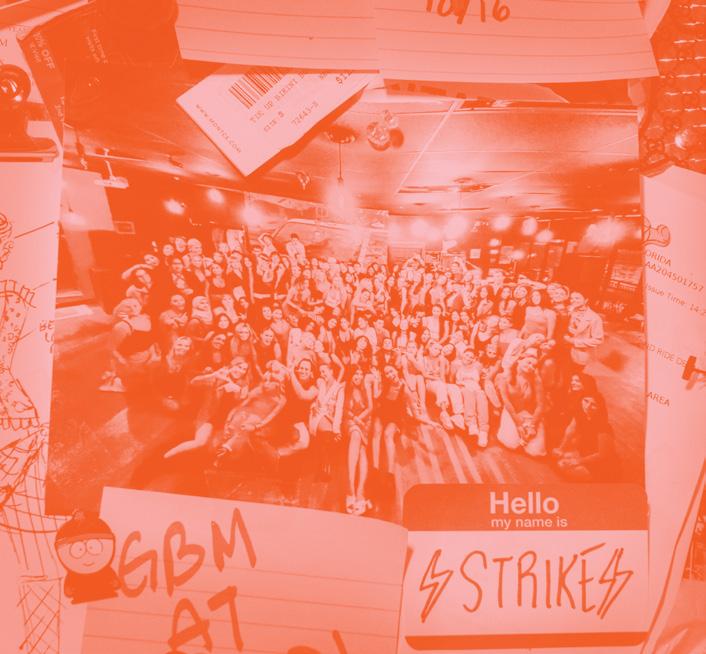
STRIKE ( ISSUE 09 ) STAFF EDITOR - IN - CHIEF Erin Hu CREATIVE DIRECTOR Liv Vitale EXTERNAL AFFAIRS DIRECTOR Lauren Casole * /
Assistant Editor-in-Chief
Daniella Conde
Blog Directors
AJ Bafer
Kate Corcoran Copy Editors
Olivia Hansen Sofia Zarran
Web/Social Coordinator
Denisa Fluturas Writers Daniella Alfonso Naina Chauhan
Cassie DesVergers
Olivia Evans Zarin Ismail Avery Morton Juliette Paymayesh Sofia Ramos Andrea Valdes-Sueiras
Content Team Orange Directors Isa Camargo Gabriela Donati Content Assistants
Ben Apple Chloe Mazloum Kaitlyn McLaughlin Hannah Sternthal Julia Whitehurst
Content Team Blue Directors Nicole Torres Jordan Witt Content Assistants Sophie Collongette Jason Hao Niamh Kennedy Annelee Kiliddjian Ben Robinson
Styling Team Directors Eva Duran Noah Sams Styling Assistants Aliya Delcastillo Tayler Ford
Assistant Creative Director
Jacob Wall Design Director Dina Coletti Art Director Larissa Aguiar Art Assistants
Jordan Corina Chloe Girod Rhythm Kumar Jessica Page
Beauty Director Katie Geremia Beauty Assistants
Lindsay Ayers Mia Koval Ava Lodge Alexa Miller Amanda Spangler Arianna Yacoubian Hair Stylists Mackenzie Potts Lola Sanchez
Bookings Directors
Heather Parrish Alexi Stoupas Bookings Assistants
Lexi Barten
Marisa Greenberg Krista Kilburg Caroline Rives Emma Tullio Caroline Udell
Castings Directors
Nehemie Cyriaque
Kate Pilgrim Castings Assistants
Bianca Boor
Madelyn Cable Alyssa Infante
Sasha Staszewski Lindsey Robison
Mya Genuardi Keegan Hannan Tabi Higgins Jon Loferski Matthew Sloboda Huntleigh Zhang
Photography Directors Katalina Enriquez Stephanie Garcia Photographers Brieanna Andrews Natasha Badal Kat Rettino Nicole Scharff Annika Thiim Ian Alvarez Ward
Film Director Kyle Totzke Film Assistants Camila Celaya Josie Cruz Madelyn Markman
Assistant External Affairs Director Alyssa Rives
Finance Directors Kate Bansmer Sophia Galinos Finance Assistant Nihar Soman Marketing Directors Preslie Brown Kelly Henning Marketing Assistants Kenzie Chase Lexi Denowitz Eden Depekary Eliza Lahvis Sam Levine Christina Mackey Gaby Tryzmel Jessica Velez Zachary Venezia
Merchandise Director Chloe Mazloum Merchandise Assistants Alexis Castillo Alexa Craig Dani Donshik Lexi Horowitz
Public Relations Directors Theodora Oatmeyer Joanna Salvat PublicRelationsAssistants
Carolynn Arias Bailey Berhannan Candace Dobos-Bubno Sammy Dratch Jessica Freeman Sara Klein Emma Valdeon Mia Zaldivar Sales Directors Mackenzie Logue Isabella De Miguel Sales Assistants Vanessa Anderson Bella Barrios Layla Dubreucq Emily Talalaevsky
Social Media Directors
Emma Donato Kassandra Rodriguez Social Media Assistants Audrey Baker Dante Centofanti
Alexis Gershuny Brittany Grice Mackenzie Kean Jillian Payne Katherine Signori Madison Suter Carly Weinblatt Athena Veghte Music Coordinator Ella Dang
BrandAmbassadorDirector Sophia Johns Brand Ambassador Assistant Ahnaf Rahman Brand Ambassadors
Colby Beech Julia Getzoff Melanie Herrera Sydney Kesselman Isabella Leon Katie Liang Chloe Leib Adriana Martinez Kaitlyn Masone Stella Mazzitelli Hunter Monson Katie Perez Jesse Pickel Emma Putnam Cameron Relicke Madison Samperi
Hadley Susa Kailey Tehrani Lauren Whittier Meredith Workman
STRIKE MAGAZINE GAINESVILLE
*
Strike Magazine Gainesville embodies the idea that we are all striking. Strike highlights the unique qualities of a student body of individuals who express themselves authentically. Through our diversity, varied life experiences and interests, we each bring refreshing perspectives and visions to the world and one another. We value the human experience, and we aim to create a magazine that embodies the defining attributes of all people and yields a deep appreciation for fashion, art and culture.
Strike Magazine in Gainesville, Florida, was founded in March 2018 as the first extension of the Tallahassee publication. Since then, we have grown to a staff of over 150 students. Strike has also expanded to 12 additional campuses in the United States. It serves as a creative outlet and source of professional experience for our ambitious staff. We take pride in representing Gainesville as the first student-run publication of our kind and, now, as the nation’s largest student-run fashion and culture magazine.
We, the editors, would like to thank our team for their consistent passion, creativity and support. We are endlessly inspired by the distinct beauty of each member of Strike and the Gainesville community. Strike Magazine looks forward to continuing to empower our readers to think beyond the norm.
Strike Out,
Lauren Casole, Erin Hu & Liv Vitale
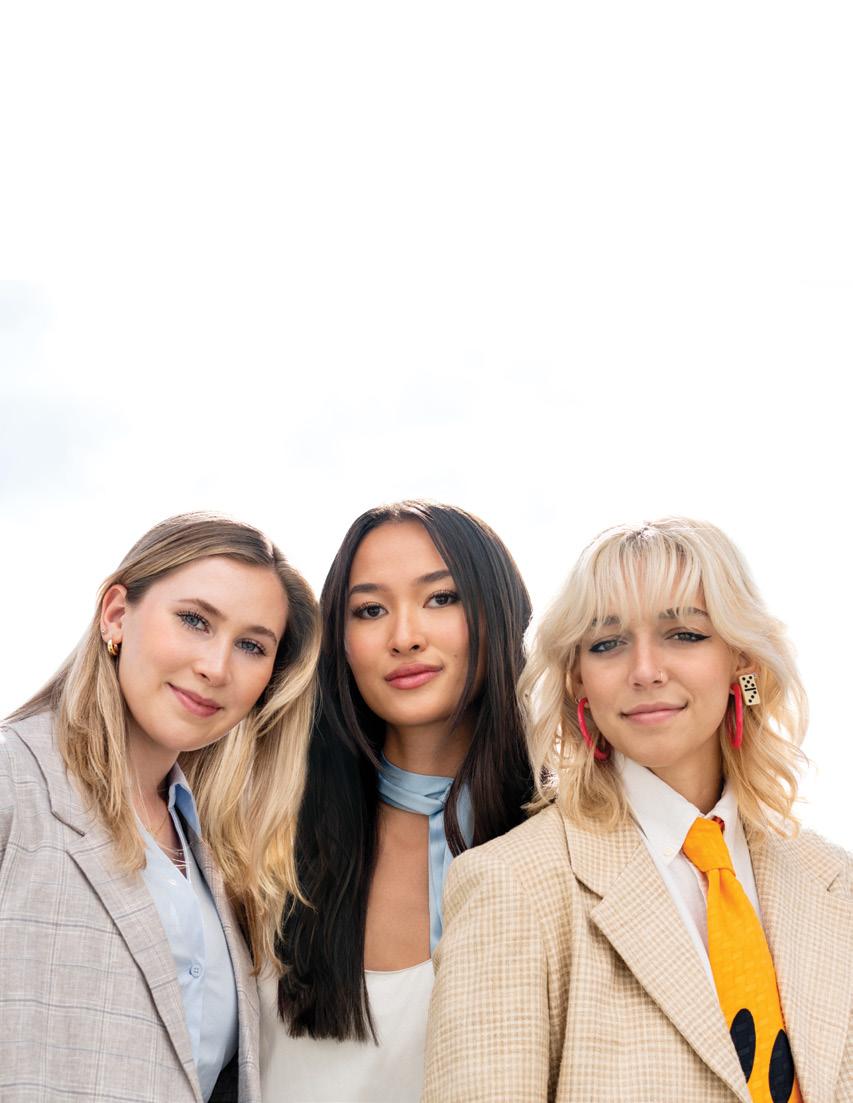
///////// ABOUT
Model Dayanna Peek
Fashion Liv Vitale
Photography Katalina Enriquez
Edit Erin Hu
ABOUT ( THE ) ISSUE

Breaking the mold comes naturally to the outstanding, creative individuals that comprise Strike Magazine Gainesville’s staff. In the past, we have crafted our issues around themes. We have delved deeply into ideas that captivate us. As imaginative innovators, we constantly want to push the boundaries of our artistry. We yearn to move forward and find new ways to be bold. So, how do we go up from here?
We have gone from coming of age to creating for the sake of creating, and now we are emerging from the chrysalis as passionate creators, holding nothing back. What inspires us? What lights the fire of creativity so deep within us that we cannot help but surrender to its power? Issue 09 not only answers these questions, but it also paints a picture of who we are at Strike Magazine Gainesville like never before. We are unabashedly embracing all aspects of our reality.
This issue is a celebration of authenticity and offers a glimpse into the kaleidoscope of interests, experiences and communities that have shaped us. The stand-alone shoots showcase what drives our individual passions and, together, they present a cohesive force of ingenuity. Gone are the days of labels and confinement. We are complex. We are imaginative. We are Strike Magazine Gainesville.
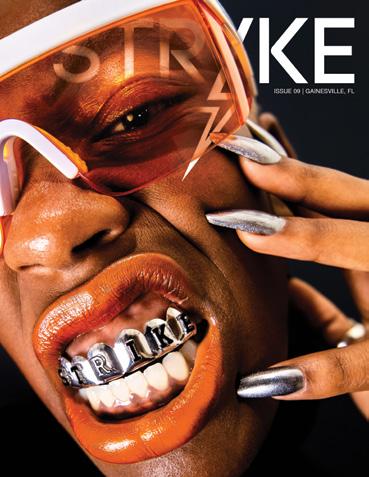
/
Erin Hu Editor-in-Chief
TAB TENTS
LE OF CON / *
14. EGO FLIP 19. CULTIVATING SELF-COMPASSION 23. THE GAZE: THEN & NOW 26. SATIATED 29. CHAOS CULTURE 33. MY HOUSE, MY RULES 37. MY “HAPPY ENDING” 43. THE JANES 47. PLAYING LIFE AS A CHESS BOARD 53. INTIMACY 61. HEELS 62. AMARYLLIDACEAE

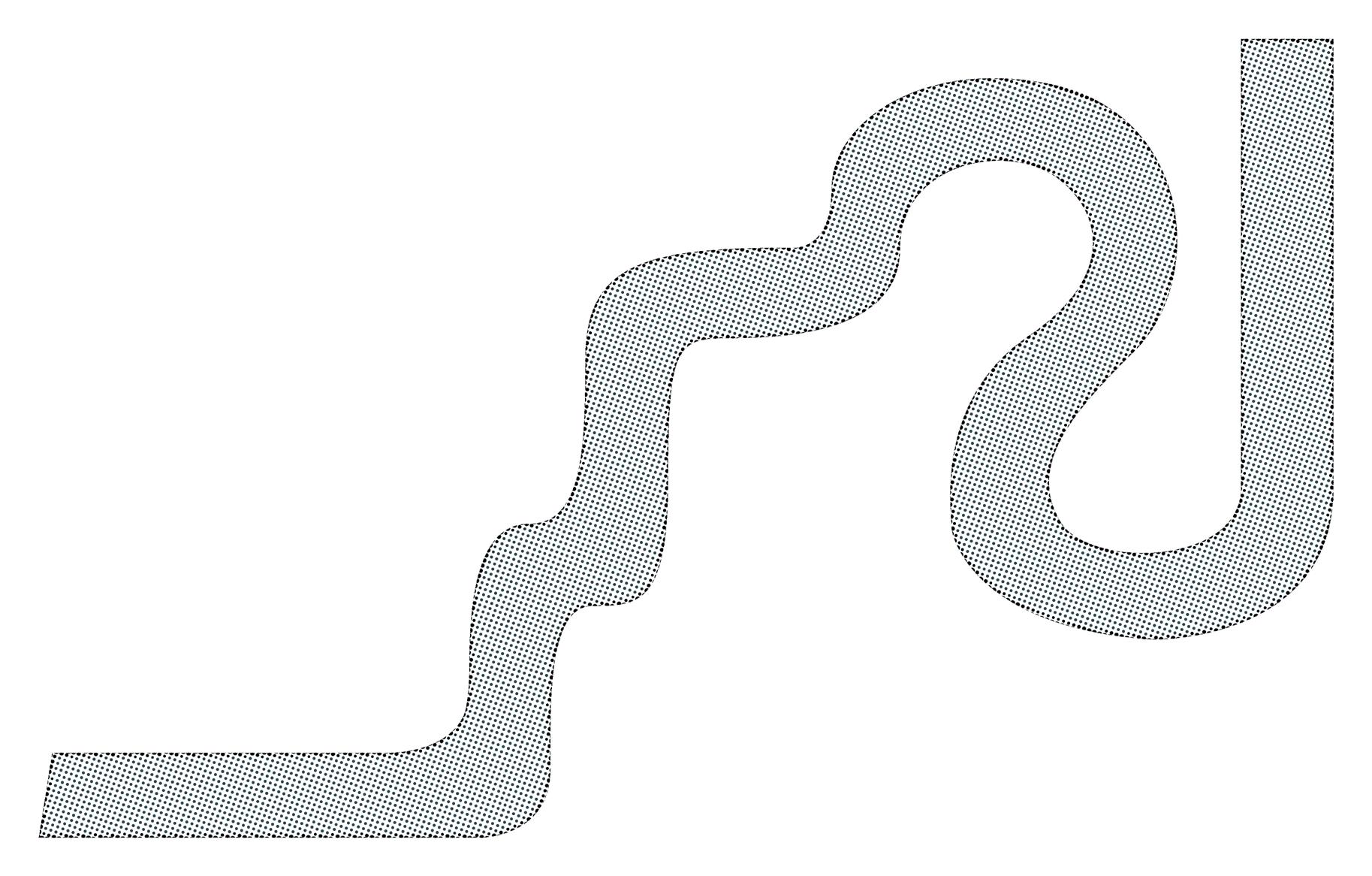 Design Dina Coletti
Design Dina Coletti


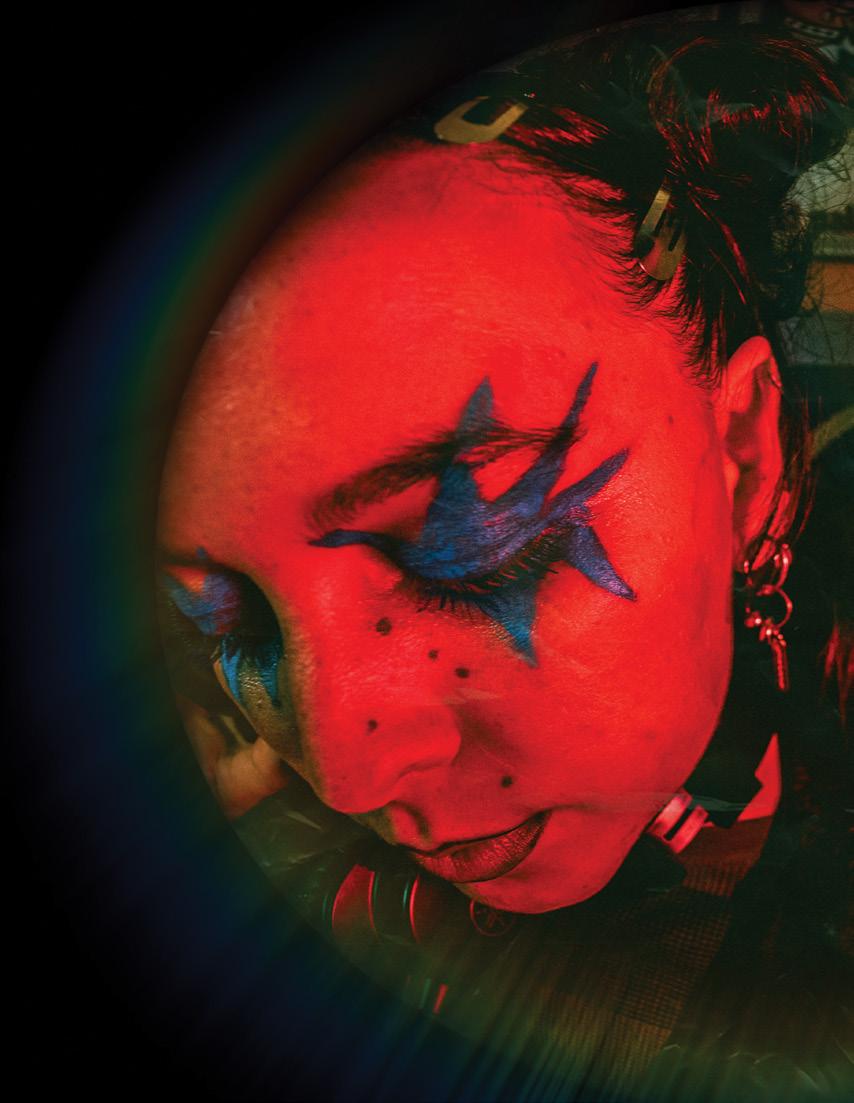
12 ISSUE 09
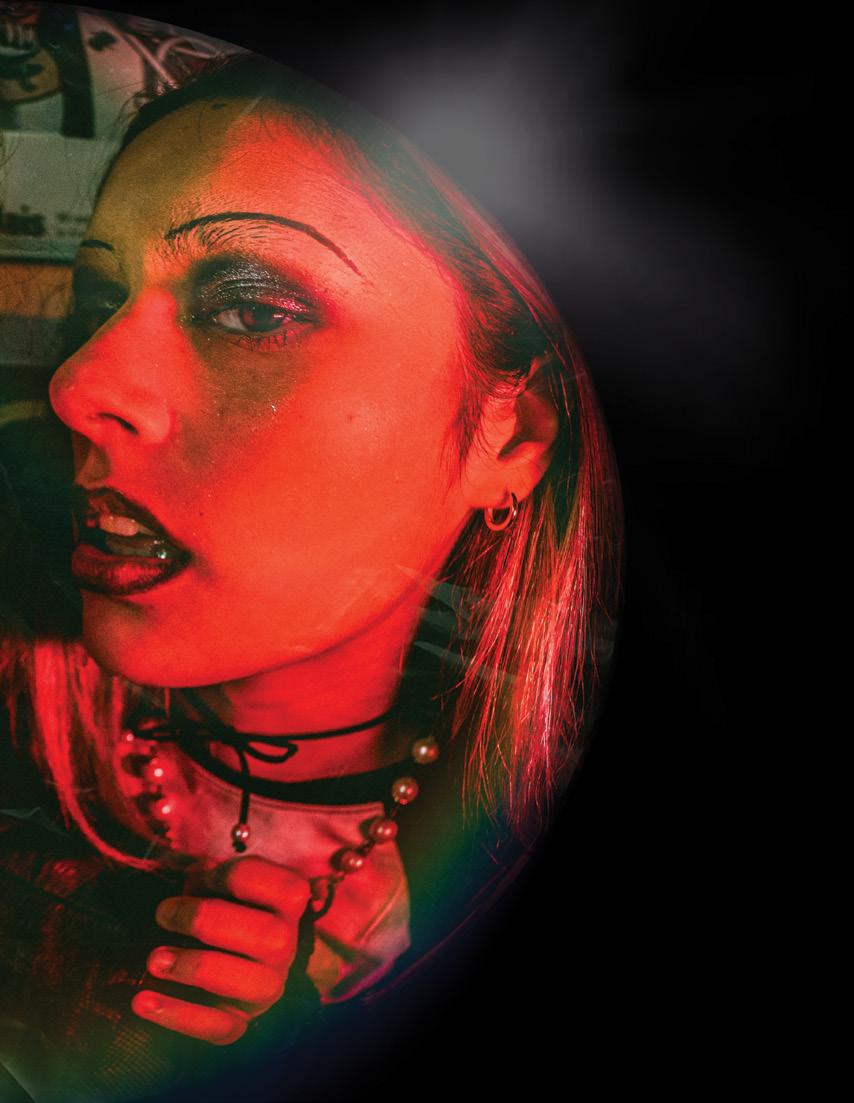 Models Soph Coru, Valentina Del Rio
Models Soph Coru, Valentina Del Rio
FLIP EGOエゴ フリップ
Photography Annika Thiim Design Jessica Page Text Design Dina Coletti
Everyone has two choices in this world: to be hot, or die trying. Growing up, I never questioned my appearance; I felt sure of myself on the inside and out. However, as fluctuating trends of physique reign, the on-demand nature of aesthetic reconstruction is as tempting as ever. Heavy discourse surrounds the effects of physical cosmetic modification on self-perception. Though this conversation tends to have adverse undertones, the discussion neglects the su perconfidence gained from turning to injections or surgeries.
This wisdom comes from personal experience. We’ve all given into social pressure against our better judgment; I fell victim as I attempt ed to morph my face into the ‘cute makeup’ filter on TikTok. Step 1: get a lip flip with a friend.
A lip flip is an injection which relaxes the upper muscles of the mouth, giving the illusion of a fuller lip. Visions of being a future guest star on “Botched” consumed me.
Going in to get the procedure done, I felt far more skittish than I had for medical surgeries. I feared my social perception would curtail if others found out I had given in. I worried my mother would scorn me. Even worse, I grew distraught at the notion of despising who I saw in the mirror: an insecure coward who allowed public influence to dictate how she saw herself.
However, I never anticipated the confidence that followed. After rapid healing, I felt slightly reborn with a brand new pout, teeming with a newfound energy of certainty. I felt enhanced rather than changed. I felt my sensuality strengthen and my posture straighten.
After tapping into my inner baddie for months, everything changed when I saw the same friend return home with a new lip flip. She told me she had gone too many weeks without getting her lips done again, breaking the news that the lip flips we had gotten only lasted six to eight weeks.
Record scratch, freeze frame. Shocked and aghast, I realized the recent months once characterized by a superficial glow and super confidence were lived under false pretenses. My lips were normal and their fabulous existence was fabricated. The mirror was a filter reflecting a nonexistent pout.
The saying “when you look your best, you feel your best” took on new meaning. While a cultural obsession with fuller lips led to the initial flip, as I grew accustomed to the addition, I understood I had done it for myself.
I turned out to be a living, breathing placebo effect. Even after gaining insight that my lips had disproportionately grown in relation to my ego, I still felt I had been changed. Though the veil had lifted, re vealing my practically unaltered physical state, my demeanor stayed unscathed. I was still that girl.
The phantom of my flipped lips lingered subconsciously. Once seen through the lens of cultural infatuation, as time passed I under stood my rounded face to finally be deemed ‘hot.’ As soon as I recog nized the facade, it remained clear even faux-adhering to a societal standard was enough for my physical confidence to soar.
There is a fine line between being ‘good-looking’ and being confident. Though society tends to conflate the two, the latter tends to give way to the other. The aura of beauty comes with a self-confi dent prerequisite, always. Indeed, I went backwards on this track to self-confidence— but with the understanding I’ve gained on the sub jective nature of beauty in a world that aims to define it into objectivity, I can now see that even the trick of illusion can shine true light on the beauty of confidence.
I feared I took the easy way out in conforming to societal pressure, only to find that the very thought of doing so bolstered my self-assur ance. One’s route to feeling comfortable in their own skin and gaining confidence should never be scolded or considered artificial. I do not need another bodily modification done to manifest effects mentally— but there is no shame in the game of going after it again if I so please. Once I fully accepted myself as what was decidedly attractive, the placebo effect took place. Minorly (and temporarily) reconstruct ing my face was a small price to pay to reconstruct my self-image.
JULIETTE PAYMAYESH
14 ISSUE 09
 Design Chloe Girod
Design Chloe Girod
 Model Maia
Photography Katalina Enriquez
Design Larissa Aguiar
Model Maia
Photography Katalina Enriquez
Design Larissa Aguiar



 Design Dina Coletti
Design Dina Coletti
My best friend and I love to joke that we used to be ugly. On a nearly regular basis, we reminisce on our eighth-grade selves, two girls who didn’t wear makeup, didn’t know how to keep our hair from frizzing and couldn’t talk to boys. Sometimes it feels like a relief. Phew! Thank god we don’t look like that anymore. I like my physical appearance now more than I did years ago, so it must mean I’m doing something right. Right?
Often, we fall into the trap of bullying our younger selves, hoping the never-ending cycle of ridiculing and patronizing will make us feel better about our present being. The fact is: we don’t feel better, but we fall into a cycle of self-deprecation masked by the illusion of self-improvement.


Every time I poke fun at my younger self, a thought echoes in the back of my head. Am I going to feel this way about my present self in 10 years? This internal dynamic with my past self only ensures that I’ll remain in a cycle of self-loathing, even if it seems trivial to do so.
Happiness is elusive when we derive it from pursuit. As I sit in class, envying my classmate’s hair and outfit, I become restless, wanting what I don’t have. I think about what I could be, always chasing some thing that isn’t there. I spend my existence trying to be someone who is past the breach of my physical vessel, filling myself with turmoil and constant distress. I fall into the trap of never being good enough for myself, and shaming past me, instead of treating her with uncondi tional love and compassion.
What if, instead, I changed the way I look at myself? What if, in stead of trying to self-correct versions of my past self, I honor those moments? A part of healing is expressing these affirmations rather than denying them. I decide to tell my classmate I love her hair and outfit. She seems surprised, not expecting to hear that today. That’s ridiculous, I think to myself. If I looked like that, I would never com plain again.
She reciprocates the compliment. Wow. I consider that we may feel the same. And I consider that maybe I’m being unfair to myself.
In this moment I realize the biggest blockade to my own growth is me. As I tell myself I should be better, I fail to find peace with my present being. Although it seems like the most important aspect of my young adult life sometimes, my appearance is the least interesting thing about me. And as long as I center myself around others’ gaze, I block myself from meeting my full potential.
OLIVIA HANSEN

 Model Sofia Gurruchaga
Fashion Tayler Ford
Photography Kat Rettino
Model Sofia Gurruchaga
Fashion Tayler Ford
Photography Kat Rettino
 Design Larissa Aguiar
Design Larissa Aguiar
From a young age, I developed insecurities with my skinny legs, hairy arms and long body. As I’ve grown, I’ve learned to proudly embrace all the shapes, features and forms that come with it.
I dissect every little spec of my appearance to ensure it fits the criteria.

A gaze shadowed me everywhere since my youth, eventually morphing with my own. I was doing everything right; loose-fit clothing, neutral pieces, no skin showing, no bold colors. Yet that wasn’t enough.
Self-objectification: convincing yourself your body needs constant fixing. We split ourselves in two; one being a Dr. Jekyll-esque success story, the other a hellish Mr. Hyde collage we built ourselves.
When I go for a walk, clothed from head to toe in sweatpants, a hoodie and a ponytail, I still get creepy stares from men in trucks. I’ve realized it doesn’t matter what you wear; being a woman alone is usually enough.
We tend to stay in unhealthy relationships because we feel they’re attracted to us; what else is out there? I’m disgusting. These intrusive, society-induced thoughts halt female progress. Our brains are trained to think we aren’t good enough. We constantly worry about how we look and forget to live in our bodies.
Laura Mulvey, a British feminist film theorist, described the concept of the “male gaze” in her 1973 essay, “Visual Pleasure and Narrative Cinema.” Mulvey attested that the male gaze essentially hyper sexualizes women by reducing them to objects of ‘aesthetic’ value only for the pleasure of heterosex ual males. This is believed to be the “perfect woman”.
Think about it: how much more comfortable and relaxed are women when they’re just hanging out with their girlfriends? Sweats, hair up, no makeup. When guys come into play, the whole mood chang es. Tight outfit, hair down, makeup on.
This leaves us with a double standard. Why should I impress men and feed into their sexual desires when they won’t do the same for me?
But this double standard is becoming less popular. Instead of wanting to look “attractive” in the traditional sense, women wear their apparel as an opportunity to indulge in their creativity. The ward robe has shifted from being very conservative to being more badass—Blazers, trench coats, heels, trousers, etc.
For the last decade, body positivity has shifted into becoming a more positive idea where clothing campaigns have emphasized the idea of, “Girls, you are so beautiful. Never change.” Campaigns like Aerie #AerieREAL and JCPenney #HereIAm.
The male gaze has been in style for far too long and it’s time to start dressing for ourselves. Over time, the new replaces the old. Every woman has a unique way of looking at the world, reflected in her clothes. Every woman’s version of empowerment is different. Some prefer to wear modest clothing, while others lean more revealing.
It is time we take the gaze back and make it our own! Whatever item of clothing I choose to wear, one thing will remain definite: The only gaze that matters is mine.
DENISA FLUTURAS

24 ISSUE 09
 Models Noah Jones, Angela Mueller, Ty Parris, Anthony Perina, Raya, Dallas Young
Fashion Hobby
Photography Katalina Enriquez, Nicole Scharff, Ian Alvarez Ward Design Chloe Girod
Models Noah Jones, Angela Mueller, Ty Parris, Anthony Perina, Raya, Dallas Young
Fashion Hobby
Photography Katalina Enriquez, Nicole Scharff, Ian Alvarez Ward Design Chloe Girod
SATIATED

My mother was late to a dinner party again. She was doing too many things at once. Pulling her shoes on and hobbling around with the straps unfastened while she reapplied a deep red lipstick. Tug ging her bra strap into place, adjusting her cleavage in the low neck line of her dress. I was sitting on the bathroom floor, removing some toenail polish that had been on for two weeks too long. They were half chipped pink, half bare toenail. The room smelled like acetone and hairspray. I had a headache.
She took a long drink from a bottle of cabernet, checked her phone. “Oh, thank God,” she said. “He’s running behind. Won’t be here for at least ten.”
“Who is it, again?” I asked. “Luke,” she said. “He’s in sales. You’ve met him once or twice.” She was half listening, half slathering mascara on an eyelin er-rimmed eye.
“I don’t remember that one,” I said. She leaned back from the mirror, squinted at me. “That one? What the hell is that supposed to mean?”
I shrugged. “Your work friends. I’m just trying to remember who’s who.”
She was already back to her reflection, assaulting the other eye with the mascara brush. “Damn it!” she said. She started rubbing at a spot of black on her eyelid, trying to erase the mistake without ruining anything else.
A moment passed. I moved on to my right foot, a small mountain of cotton balls forming beside me. “You look great, mom.”
She stood abruptly and crossed the bathroom to the full length mirror in her closet. She leaned down, fastened her left heel, struggled with the right buckle a little, then fastened that one, too. She took a step back. I watched her eyes watch her feet, her calves, her thighs. I watched her hands reach up, press against her stomach. Breathe in, breathe out. Frown slightly.
“Do I look okay, Marianne?”
“You look great mom. Swear.” I said again.
Her eyes snapped to me, looked at my feet, my calves and thighs. I was paying very close attention to my right middle toe. There was a spot of pink polish that just wouldn’t budge.
“I used to look just like you, you know.”
I closed my eyes. I couldn’t get that damned spot out.
“I used to look just like you,” she said again. “I was just a little thinner and my hair was longer. I’d curl it and I’d wear the tiniest
dresses that I could get away with. Every Friday. Your grandma want ed to lock me up, I’m sure you can imagine.” She laughed at herself, flapped the memory away with a manicured hand. Another drink of wine. “But I didn’t care. I’d let this boy or that boy drive me around town. Buy me a movie ticket or a cheeseburger, not that I’d eat it. But it was fun to let them spend and spend.”
I gathered the cotton balls in my hands, stood and carried them over to the little trash bin by the mirror, bent down and dropped them inside. Her hand grasped my wrist as I straightened up. Her hand was a little too tight. She pulled me into the mirror beside her. Her eyes watched our feet, our calves and thighs.
“Here’s an idea,” she said. “Why don’t you throw on some thing from my closet? I have a pretty little black dress that’s a little loose on me. I might even have some heels you can squeeze into. You can have a glass of cab and Luke can take both of us to the party.”
I smiled with my mouth. “I wish, mom. Lots of calc to do this weekend.”
She had wine in her eyes and her voice as she turned away from the mirror and looked at me. “Come on, Marianne,” she said. “It’ll be so much fun.”
There was a car horn outside. Her eyes flitted over to the window and she was moving. She grabbed her phone, her purse, her keys. “I’ll be home by midnight,” she said over her shoulder, stum bling slightly as she moved towards the door but recovering quickly. “Don’t study too hard. Pantry’s full. Love you to the moon.” And she was halfway down the stairs. I heard the front door open, close, the lock turn.
I stood in front of the mirror, holding my right wrist in my left hand. Eventually I turned to my reflection and looked at my feet, my calves, my thighs. Pressed a hand to my stomach. Breathe in, breathe out. I turned and picked the cabernet up off the floor, switch ing off the bathroom light as I left the room.
I walked downstairs, flicked the kitchen lights on. I opened the fridge, slid the bottle of wine into the side door, closed it. I shuf fled through the pantry and pulled out a box of cereal. Back to the fridge for the milk. My hand stopped halfway to the gallon. My eyes burned in the cool air. The fridge smelled like acetone. My hand hung in the air, dropped to my side. I closed the fridge door, stood there, opened it again. I could hear every noise in the house as I pulled the cabernet from the side door.
AVERY MORTON
26 ISSUE 09

Concept & Photography Jacob Wall
 Models Raya, Dallas Young Fashion Hobby
Models Raya, Dallas Young Fashion Hobby
28 ISSUE 09
Photography Katalina Enriquez, Nicole Scharff, Ian Alvarez Ward Design Liv Vitale
CHAOS CULTURE
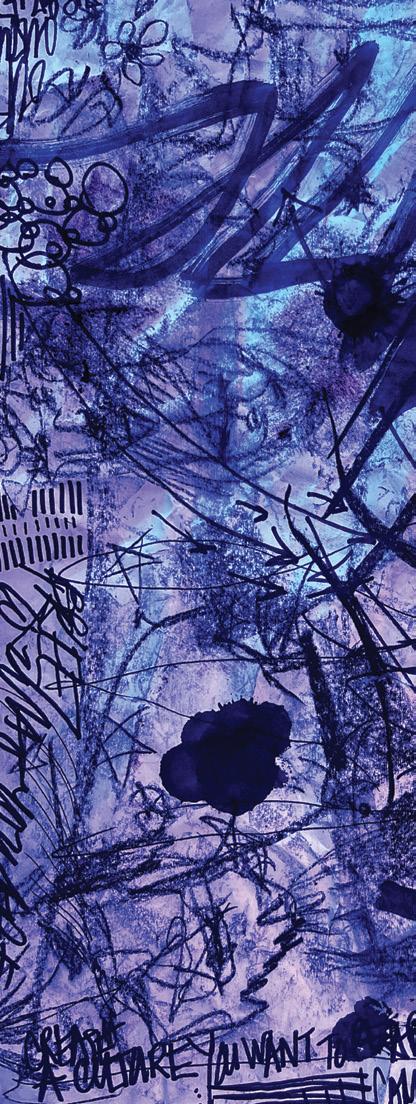
At first glance, it may seem like a piece of wood on wheels. But these boards have a destination: a life well-lived, with the friends and scars to prove it.
Skateboarding traces its roots back to surfers in 1950s California. Itching for something to do when they couldn’t ride the waves, they decided to put wheels on boards and surf the streets. Soon after, these boards could be found on the streets of New York, where young boys would ride them just about anywhere — into traffic, at parties and over flaming trash bins. These juveniles caught the attention of MTV, where their daredevil escapades began to be broadcasted for all to enjoy. It was official: that piece of wood on wheels opened up a whole new world of fashion, music and media that would revolutionize American pop culture
Skateboarding gained popularity because it was cheap and acces sible, especially compared to other extreme sports like dirt biking, snowboarding and skiing. Skateboarders quickly became branded as misfits; kids with too much time on their hands and crazy ideas run ning through their heads. These humble boards opened up a whole world of risk taking and adventure.
Skateboarders in Media
Skaters took their ambitions on the streets to the web and decided to share their gnarly and new ideas with the world. The likes of Bam Margera and Stephen “Steve-O” Glover, the stars of “Jackass,” kick started their careers by performing skateboarding stunts on camera. These “delinquents” found a way to support themselves and their families, while also finding inventive creative outlets and branding their own names. Take Rodney Mullen, for instance, a Gainesville native who invented the majority of skating’s ollie and flip tricks; his innovations are considered building blocks for modern street skate boarding today. He also helped build the skate scene here in Gaines ville, which explains why you’ll find many dedicated skaters around town. Viewers lived vicariously through the wild antics of skateboard ers like Margera, Glover and Mullen, and they couldn’t look away.
Fashion and Music
Crazy videos of tricks and destruction weren’t the only ways skate culture made its mark. Skate apparel is its own form of durable and destroyable — clothes that will last through several falls and shoes that can handle the wear and tear of the street. People soon adopted skate clothing like Vans, Thrasher and Supreme. Apart from be ing comfortable and durable, skate clothes are fashionable, which contributed to their immense popularity. Artists like Tyler, the Creator, Mac Miller and Kendrick Lamar are just some of many celebrities that have profited off of the wearability of skate culture. Music also forms an integral part of skate culture. Concerts for musicians in genres like rap, punk and ska will likely be filled by skaters partaking in mosh pits and skanking — a kind of dance where you kick your legs and arms to ska music.
For skateboarders, funny looks or honks from cars when on the streets simply come with the territory. As Tony Hawk, skateboarding industry pioneer, said in his promotion for the 2021 Tokyo Olympics, “it all starts with a push.”
The unbridled joy you feel when you land your first trick or make that sharp turn is unparalleled. Skating with friends, listening to music and dreaming about the future is what skating is about. Deviants are not only allowed in this community, they are embraced with open arms.
As skating continues to dominate the media, its style and culture is becoming more accessible to all who wish to partake. It’s not just about who can land the best tricks or wear the best styles, it’s about who’s willing to keep pushing, keep kicking, keep dreaming. When you’re a skateboarder, you live for the streets, and the world is your runway.
SOFIA ZARRAN

30 ISSUE 09
There’s an order to every inch of my madness. The nearly empty iced coffee just inches to the left of my laptop? Intentional. I can’t crack a sentence without 16 ounces of caffeine sailing through my veins. Mood lighting? Absolutely. Headphones? For sure. My space is a projection of my mood. Does the mess make me comfortable, or does a minimalist table top spur my productivity? An equilibrium between both is balance.
Like a life size mood ring, the space within my four walls echoes how I’m feeling. The clothes on my chair pile higher with each assign ment. The allergy medication cornered on my desk has been there for weeks; the two minutes spent putting it away would take too much time away from writing my English paper. De-stressing is stressful. Oh my god, the idea of having to do the most mundane task sounds more like climbing Everest. The clutter is suffocating.
But I get back in the groove. I write a realistic to-do list, toss the wristbands from last night, wash my dirty laundry and make my bed. I can see the base of my chair. The spoiled snacks from the fridge: trashed. There’s finally room to put pen to paper.
For many on Strike Magazine GNV, resetting is the ultimate form of self care.
For assistant creative director Jacob Wall, it’s a clean space with a side of house music and a latte.
“I rely on organization to get my shit done. Having an organized mentality helps, so your surroundings match your desired energy,” he said.
Beats by Flume, Swedish House Mafia and ODESZA help him flow into the tasks at hand. Nothing sets the mood like music.
“I am always listening to music. So, during my work, it is an essen tial for me,” Wall added.
For most of Strike GNV staff, coffee is another essential to com pleting tasks. Whether it’s a latte or an espresso, hot or iced, we’re having it. From Opus tabs to random coffee runs before a heavy after noon at the library, we’re taking sips between assignments.
“Caffeine via several shots of espresso has become my ritual at this point,” Wall joked.
Strike staffers don’t kid around when it comes to coffee or black tea, which is writer Naina Chauhan’s beverage of choice.
For Chauhan, an airy space with a spa-like smell is the only way she’s getting work done.
“I’m not a hyped up on caffeine loud sort of music, in a dark room sort of worker. I need peace and serenity to get down to business,” she said.
Her room turns into a chamber of light: windows open, candles lit and puffs of essential oils breathed out by her diffuser. Some moody, mellow beats by Beach House is the ultimate creme de la creme to Chauhan’s ideal space.
The workspace is sacred. Whatever formula you need to follow, whatever ritual you need to ready, make it intentional. The state of your environment will either bring you up or anchor you down. After all, it is a mirror of your mood.
ANDREA VALDES-SUEIRAS
Design Dina Coletti

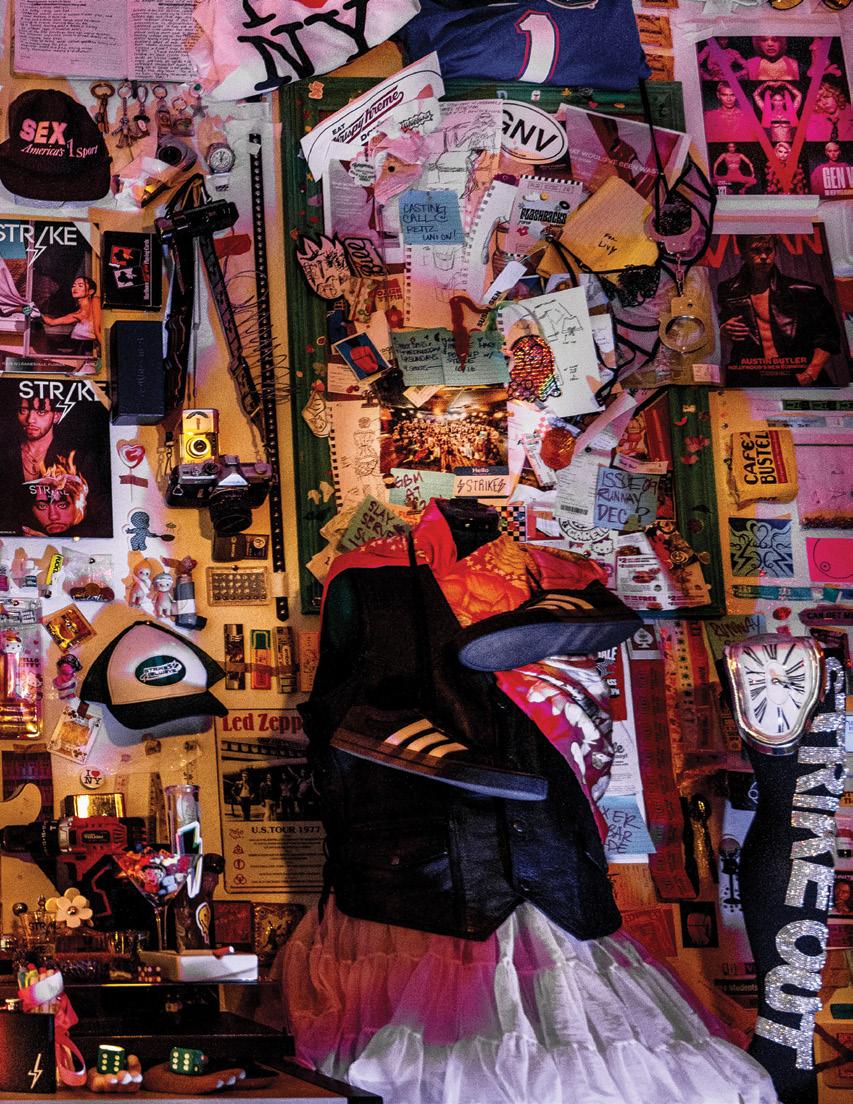
♥
SPY STRIKE
GAINESVILLE TIMES BESTSELLINGSERIES
Photography Katalina Enriquez Design Dina Coletti
I
MAGAZINE
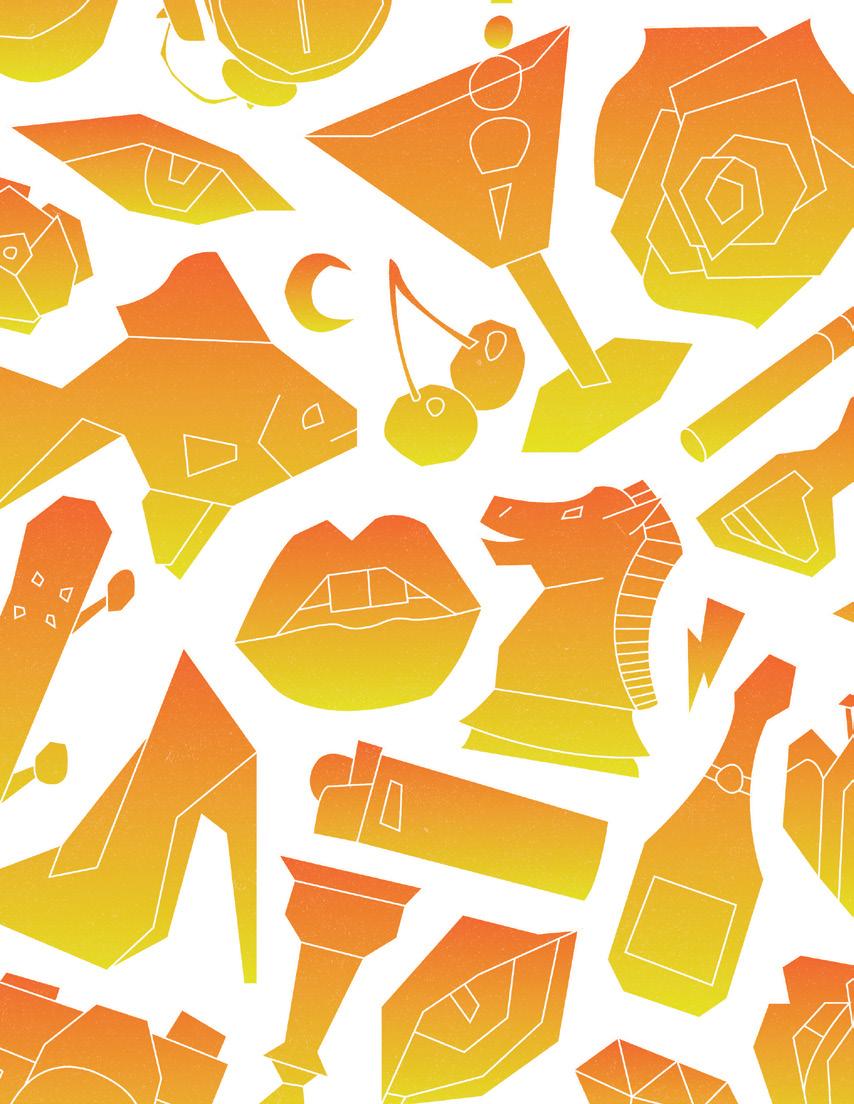 Design Jordan Corina
Design Jordan Corina
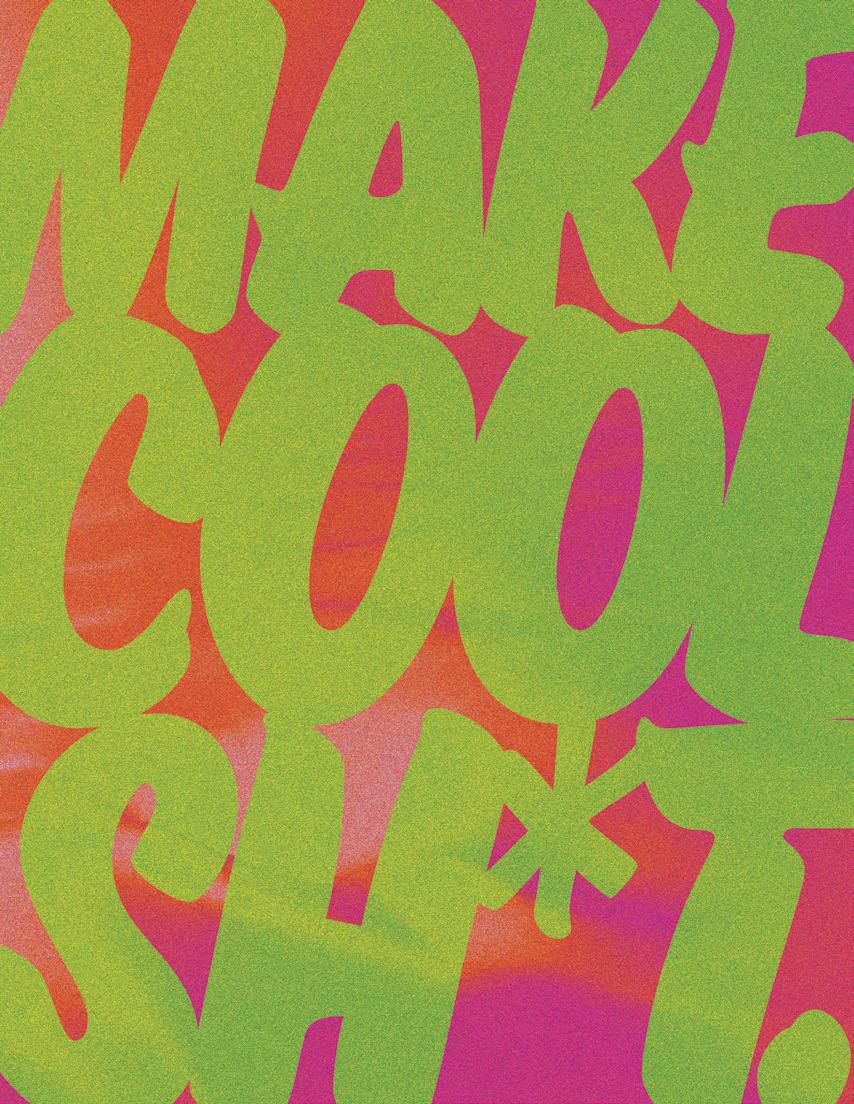
Design Jessica Page

 Models Julieta Bea, Halle Burton, Soph Coru, Theo Devlin, Carlos Gimenez, Mason Kuzmick, Devon Limcangco, Addison Meek, Lorella Quispe Messarina, Vishwa Ramanakumar, Valentina Del Rio, Nihar Soman, Alexandre Spallone, Radhika Subramanian
Photography Brieanna Andrews, Natasha Badal, Katalina Enriquez, Stephanie Garcia, Ian Alvarez Ward Design Liv Vitale
Models Julieta Bea, Halle Burton, Soph Coru, Theo Devlin, Carlos Gimenez, Mason Kuzmick, Devon Limcangco, Addison Meek, Lorella Quispe Messarina, Vishwa Ramanakumar, Valentina Del Rio, Nihar Soman, Alexandre Spallone, Radhika Subramanian
Photography Brieanna Andrews, Natasha Badal, Katalina Enriquez, Stephanie Garcia, Ian Alvarez Ward Design Liv Vitale
 Model Hailey Goldstein
Fashion Jon Loferski
Photography Katalina Enriquez
Model Hailey Goldstein
Fashion Jon Loferski
Photography Katalina Enriquez
MY “HAPPY ENDING”
The kaleidoscope of lights is heavily pulsating behind my eyes as I sway my hips to the intense thrum of the vibrating bass. Sweaty bodies knock against mine as firm, calloused hands wrap around my waist. “You are absolutely ethereal,” the stranger whispers in my ear with a breath hot and heavy on the side of my neck.
Circling around in a jagged and cloudy haze, my heavily lidded eyes connect with ocean-blue framed by loose brown curls. The intense gaze behind the stranger’s eyes sends me swimming as a buzzing numbness spreads from my head to down to my toes.
Moving in unison, my arms encircle the stranger’s neck as their hands lightly graze my body up and down. I feel them reaching out, but I’m already kissing them. Their taste, their smell, their feel so close, skin to skin.
This high is one I never want to come down from.
The lights fade out and, all of a sudden, it’s just me and complete darkness.
Where are they? Where are they? Where are they?
My head snaps up, and I choke for air. The pill bottle looks back at me, joining the rest of my depression troupe: crumpled-up tissues, burned-out cigarette butts, an empty bottle of red wine and photos of them.
Photos of me and baby-blue eyes and soft curls.
I scream deafeningly and no one hears. My voice is reaching and attempting to fill the empty voids in my body carved by lucid dreams.
I wrap my arms around my empty torso — hoping, wishing, want ing, something, anything, someone — them.
CASSANDRA DESVERGERS
 Design Larissa Aguiar
Design Larissa Aguiar
 Design Chloe Girod
Design Chloe Girod
 Model Jo Johnson
Photography Nicole Scharff
Model Jo Johnson
Photography Nicole Scharff
42 ISSUE 09
Design Liv Vitale
THE JANES
In 1968, a group of young Chicago women formed an underground coalition known as the Jane Collective. Living in a world that had barely advanced in its female reproductive reform efforts, let alone considered the option of safe and legal access to abortions, these women took it upon themselves to help the thousands of others in the United States who were left lost and desperate for help. Years away from the Supreme Court ruling of Roe v. Wade, abortion was not yet considered to be a medical practice, but a crime; even the discussion of performing an abortion was deemed “a conspiracy to commit a fel ony.” Yet, they found it to be worth the risk if it meant that they could provide aid to women with nowhere else to go.
The Janes started an organization for women, by women. They created the alias of ‘Jane’ as a way to be reached by other women, advertising anonymously and under the radar of the Chicago Mafia and the Chicago Police Department through ads in the underground newspaper and tear-off flyers on public bulletin boards. From con traceptives and reproductive health, to job positions and income disparities, a woman’s life was dependent on whether she had a hus band or children, and the legislatures that men had bound her to, as a result. They lived in a man’s world, and having been affected by these inequities themselves, the Jane Collective chose to provide what they had never been able to receive — a choice. Jody Howard, one of the group’s co-founders, had never seen abortion as a political issue until it affected her personally; she had been a young mother of two and unexpectedly pregant with her third, when she was diagnosed with Hodgkin’s lymphoma. A legal in-hospital abortion took ten days of waiting and dozens of letters being passed around from doctor to doctor. The Janes developed an organization that would not only perform safe and affordable abortions in a trusted environment, but provide counseling before and after each appointment, with no in quiry for reasonings, all while maintaining extreme discretion through alternating locations.
Between 1968 to 1973, they were able to provide an estimated 11,000 safe, affordable, illegal abortions to women across Chicago. Whether it be in the home, at the workplace, in relationships, on the Internet, or in society overall — women have always been held to different standards than men. Expected to kneel at the patriarchy’s pedestal for far too long, people who did not fit the blueprint of a white, cisgender man were considered to be second-class citizens and treated as such; women being a group to fall into this category. Especially women of color. Being held at the intersection of both gender and racial biases, stereotypes and bigotry fester and aim to hinder the success that these women strive for.
The concepts of virginity and purity have also loomed over us throughout history. Placing unnecessary importance on these aspects of a woman’s sexuality, and bolstering backlash when the standards are not met, shows how this male obsession with a woman’s virtue hasn’t faded. Despite societal progression in terms of contraception and education on sexual health, we continue to be governed by deeply ingrained double-standards that place women at a perpetual disadvantage. Forget the wage-gap — working late instead of staying home? She’s a bad mother. 30 and single? She’s run-through and a problem. Even today as women ascend to high places in the professional world, their accomplishments are simulta neously met with both praise and reprisal. And as we have seen more recently, when there’s freedom found in the autonomy of making one’s own choices, it is removed and governed by those who should have no say on the matter.
With every step forward, there comes a step back. But with it, as seen in “The Janes,” there’s also a motivation to strike a change.
SOFIA RAMOS
 Model Nico Prystawik
Photography Annika Thiim Design Chloe Girod
Model Nico Prystawik
Photography Annika Thiim Design Chloe Girod

 Models Justin Docal, Cora Gilbert
Models Justin Docal, Cora Gilbert
46 ISSUE 09
Photography Natasha Badal, Katalina Enriquez, Ian Alvarez Ward Design Erin Hu
PLAYING LIFE LIKE A CHESS GAME
Tired of my phone and trashy romance novels, I decided it was time I took up a hobby. Hence, chess. Like any self-respecting modern woman, I took to YouTube to teach myself the rules and took to Amazon to order the most ridiculous chess board that would have the queen of “Queen’s Gambit” shaking in her dull boots. I came across a list of rules entitled “FIVE CHESS OPENING RULES.” After reading through the rules, being confused, rereading them, I began thinking. Taylor Swift’s “mad woman” was playing in the background. It got me thinking, can these rules be applied to life, too? If so, are there two rule books in our world — one for the players, and one for the pieces? Double standards are prevalent, but recently seem to have resurfaced. In a time of social awareness, we are unable to shake the ghouls of gender norms.
There are different unspoken rules for everyone in society, and as much as we try to deny it, we are still collectively following the narrow rules that have been laid out for us. Back to chess: let’s investigate how these life-applicable rules must be interpreted differently based on your gender identity.
1. First rule of chess: Open with a center pawn
A strong opening move. Stare down your opponent and assert your dominance with a head-on maneuver. Men do this daily with a firm handshake, a fierce glance. Everyone else must wait for a signal telling them who the dominant one is in every interaction. This rule can be read as “let your opponent open with a center pawn while you plan a move that forwards your position in the game while also not threatening your opponent’s standing.” Or maybe something a little more punchy.
2. Second rule of chess: Knights before bishops
Is this the medieval slang for “bros before hoes”? Are girls allowed a wine night like how boys observe Saturdays as their day of play? Or, in a heterosexual relationship, will the man always be allowed to put their friends before their significant other while women are expected to dote on their partner whenever he finds time to entertain her? In non-heterosexual relationships, will there always be one partner that subliminally holds the power to freely act as they please? It is ap parent that severe power dynamics have become normalized within relationships. The days of the nuclear family are not far behind, even though we like to believe they are.
3. Third rule of chess: Don’t move the same piece twice “Don’t go back for sloppy seconds” is all I am hearing. The issue with this, though: When women move on from relationships that didn’t work and find someone new, they are always blamed as the
issue. A relationship fell apart because it was toxic and filled with hate? Oh, she probably nagged him too much. Not being ridiculed for their body count is a luxury heterosexual men have that they don’t even realize. You need not circle back to old partners when the world welcomes newly single you with open arms. So next time you pick up the phone to drunk-dial your ex, consider whether your desire stems from missing those nights together, or if you fear moving on because of societal stigma on having a few exes.
4. Fourth rule of chess: Try to maintain at least one pawn in the center Keep one person at the top of the roster? Noted. But wait, women can have multiple romantic interests and avoid being berated with the most offensive insults you’ll hear in the locker room? And those in non-heterosexual relationships can keep several partners at once without receiving hateful commentary about not being able to main tain a healthy relationship? Maybe this applies to the masses, but it’s an unspoken rule that everyone except heterosexual men must keep their affairs on the down-low to avoid scaring off other potential mates. Keep it hush!
5. Fifth rule of chess: Don’t quit without a clear and adequate reason

The final and most important rule: avoid quitting unless there is a valid and specific reason why. Always push through. This is beginning to sound like a little league coach’s inspiring pregame speech. It is hammered into boys from a young age that they must always perse vere no matter the circumstances. Quitting is for girls (offensive)! But the intense pressure of having to always be strong and tough is too heavy of a burden to put on men. Staying unemotional in the face of adversity goes against human intuition. Women are consistently dot ed upon when they are upset. Why can we not reciprocate that same energy when a man is going through a hard time?
Playing life like a chessboard is a phrase as old as time; so are the struggles that keep marginalized communities from being able to do so. Being a fierce modern individual is a daunting task when judgment is cast upon you whenever you stray from the stereotypical path even a centimeter. It seems as though we have all been forced into the role of the pawn, being moved at whim and without autonomy at the hands of expectations cast upon us. When will the time come when we can step out of the game, take control and move the pieces of our lives on our own? The role of the pawn is getting a bit exhaust ing.
OLIVIA EVANS
 Model Laasya Moparthy
Fashion Tabi Higgins
Photography Brieanna Andrews
Model Laasya Moparthy
Fashion Tabi Higgins
Photography Brieanna Andrews
 Model David Zhang
Fashion Matthew Sloboda
Photography Annika Thiim
Model David Zhang
Fashion Matthew Sloboda
Photography Annika Thiim

 Design Rhythm Kumar
Design Rhythm Kumar
 Model Lauren Whittier
Fashion Keegan Hannan
Photography Annika Thiim
Model Lauren Whittier
Fashion Keegan Hannan
Photography Annika Thiim
I was 15 years old when I found myself rolling my tongue around the word “boyfriend” for the first time. The smothering darkness of the 2 a.m. sky could have hidden my smile, if it were not for the cheeky interference of my glittering fairy lights.
Our relationship was full of firsts. Our inexperience with sex forgoes being spelled out, but it was why we prioritized trust and caution. We believed intimacy takes time to grow. Before we could commit, we agreed the relationship needed to be built on unequivocal love. It was a conversation he and I embraced, but my friends weren’t ready for it — neither is society, in general.
My friend group met my decision with shocked faces. All around us, our peers were easily embracing their sexuality. Sex apparently has an unspoken deadline, even for high schoolers. It was certainly not the two years my boyfriend and I took to decide we were ready.
This unspoken deadline is a product of the TV shows teenagers grow up consuming. Nothing is wrong with high school sexuality, until real teenagers force themselves to participate because TV’s hypersexualized depictions of minors have convinced them sex is a fundamental part of high school culture.
Media focused on high school life is very popular, and these roles are often played by 20- and 30-year-olds. Many of Gen Z’s favorite teenage shows have depicted underage characters engaging in over ly sexual acts. When teenagers watch these shows, their perceptions of teenage sexuality may be significantly distorted.
In “Euphoria,” 18-year-old Cassie Howard’s thirst for validation fu eled her responsiveness to men’s interests in using her body. Yet, the
overuse of nude, tantalizing scenes of a barely legal character sug gested that young women turning 18 signifies they should embrace sexual exploration before they are comfortable with it.
“Gossip Girl” also trivialized sexual intimacy and glamorized un healthy relationships. The underaged characters used sex to climb the social ladder and were romantically involved with adults, which conveyed teenagers can objectify themselves to achieve success and downplayed predatorial relationships.
Netflix’s critically-acclaimed original “Sex Education” embraced the sexual awkwardness encountered by every teenager. The show provides a unique yet refreshing perspective by delving into problems surrounding teenagers slowly but surely learning how to approach sex. Although the characters are played by adults, the realistic repre sentation of teenagers figuring out their bodies was a long-awaited approach of authenticity toward teenage sexuality.
More media like “Sex Education” is essential to reassuring teenag ers it is okay to treat sexual intimacy as a journey. However long they want their journey to last is up to them and not society. Teenagers should have autonomy over when to start exploring their bodies.
I do not regret my decision to wait because it was what I wanted. But that does not mean you have to follow what I did; you do not have to follow anyone. Do intimacy on your terms. Everyone’s path looks different, but our differences are what lead to valuable advice and realization.
 DANIELLA ALFONSO
Design Larissa Aguiar, Chloe Girod
DANIELLA ALFONSO
Design Larissa Aguiar, Chloe Girod

 Models Aaron Beschorner, Adam Leme, Sebastian Padron, Charles Warren
Photography Katalina Enriquez
Models Aaron Beschorner, Adam Leme, Sebastian Padron, Charles Warren
Photography Katalina Enriquez

56 ISSUE 09
 Models Noah Jones
Fashion Hobby
Photography Katalina Enriquez
Design Dina Coletti, Liv Vitale
Models Noah Jones
Fashion Hobby
Photography Katalina Enriquez
Design Dina Coletti, Liv Vitale

 Photography Annika Thiim
Design Larissa Aguiar
Photography Annika Thiim
Design Larissa Aguiar
 Photography Ian Alvarez Ward
Photography Ian Alvarez Ward
60 ISSUE 09
Design Larissa Aguiar
Whenever I peered up at my mom as a child, I was always in awe. Her long hair, heart-shaped lips and poised demeanor made me think she was a princess. I hope I can be like a princess, too, I thought.
But I didn’t have princess-y features like my mom. Instead, I had a boxy figure, broad shoulders, a wide nose, a hairy face, and hairy arms and legs. These features weren’t necessarily feminine, and my social environment made no delay to remind me so.
I cut my hair short in the first grade. My classmates said I looked like a boy, and this pained me. It was quite frustrating because I knew I couldn’t magically grow out the hair on my head to look like a girl again. At the same time, I was dreading how long and noticeable the hair above my lips, on my arms and on my legs was because of questions like “Why are you so hairy?” or “Why do you look like you have a mustache?”
I couldn’t understand why my classmates of ages 6 and 7 were so aware of my cosmetic features, most of which I didn’t even notice until they pointed them out.
By the time I turned 10, I finally processed that I had commenced my relationship with womanhood on the wrong foot. It was time to observe how all the girls and women around me dressed and dress the same. Makeup, jewelry, hair accessories, skirts, dresses and high heels were the common denominators, but I fixated on high heels because of all the movies and cartoons I watched. You’d see the drooling male character’s jaw drop and the camera then pan to a woman walking in high heels.
It seemed that the heels make the woman, so I begged my mom for some high heels. After a few sighs and eye rolls, she gave in and bought me my first pair: some black, one-inch tall heels from Payless.
I was ecstatic to finally become the woman I was meant to be. People would no longer see me as a child — even though I was — and they’d finally take me seriously! I stepped into a family party in my new heels, awaiting the oohs and aahs from my fashionable peers who were not much older than me. I was greeted by them wearing stilettos.

I had done it wrong again.
After that day, I begged my mom to exchange my pair of heels with taller ones. She refused, warning me that I would “snap my ankles” if I wore shoes like those. Infuriated, I whimpered: “You always make me dress like a kid.”
My mom laughed. “Because you are a kid.”
“But the other kids don’t dress like that!”
Without another word, my mom grabbed a random pair of high heels from her closet, dropped them on the ground and gestured to me to put them on.
I put them on, immediately feeling uneasy and uncomfortable.
“Walk,” she muttered.
I walked, which then turned into wobbling, which then turned into limping. I quickly accepted my disdain for high heels, and my mom smirked at my discomfort.
“You still want them?”
“No.”
Comfort, I quickly realized, was most important to me. It still is, only now I get why. Now, I still don’t own a pair of heels taller than one inch. I still have hairy arms (and hairy legs at times), but I’ve found my way with womanhood. I pay less attention to how I look and more to how I feel. Wearing what I want to wear, doing what I want to do and acting the way I want to act was all it took to become the woman I want to be.
My social environment taught me to be close-minded; I believed womanhood was like a small, small shoe box containing high heels. I believed it was about fitting into that one pair of high heels, and if you didn’t fit into them, you weren’t a woman. Being a true woman was never about having the “right” physical features, behaviors and soci etal roles. It is about finding comfort in the way you express yourself, like my mom did.
I was so used to looking up at my mom that I never remembered to look down and see that she wasn’t wearing heels either — she was a fan of wedges, actually.
ZARIN ISMAIL
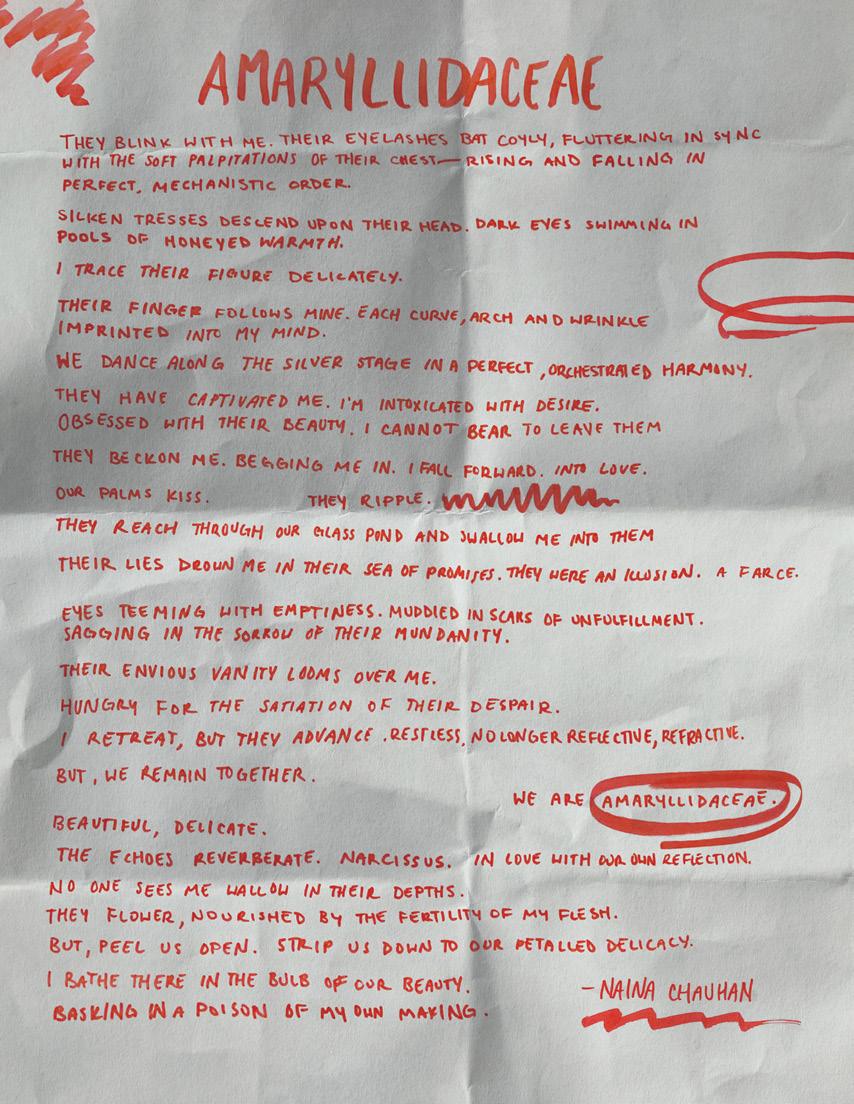
62 ISSUE 09
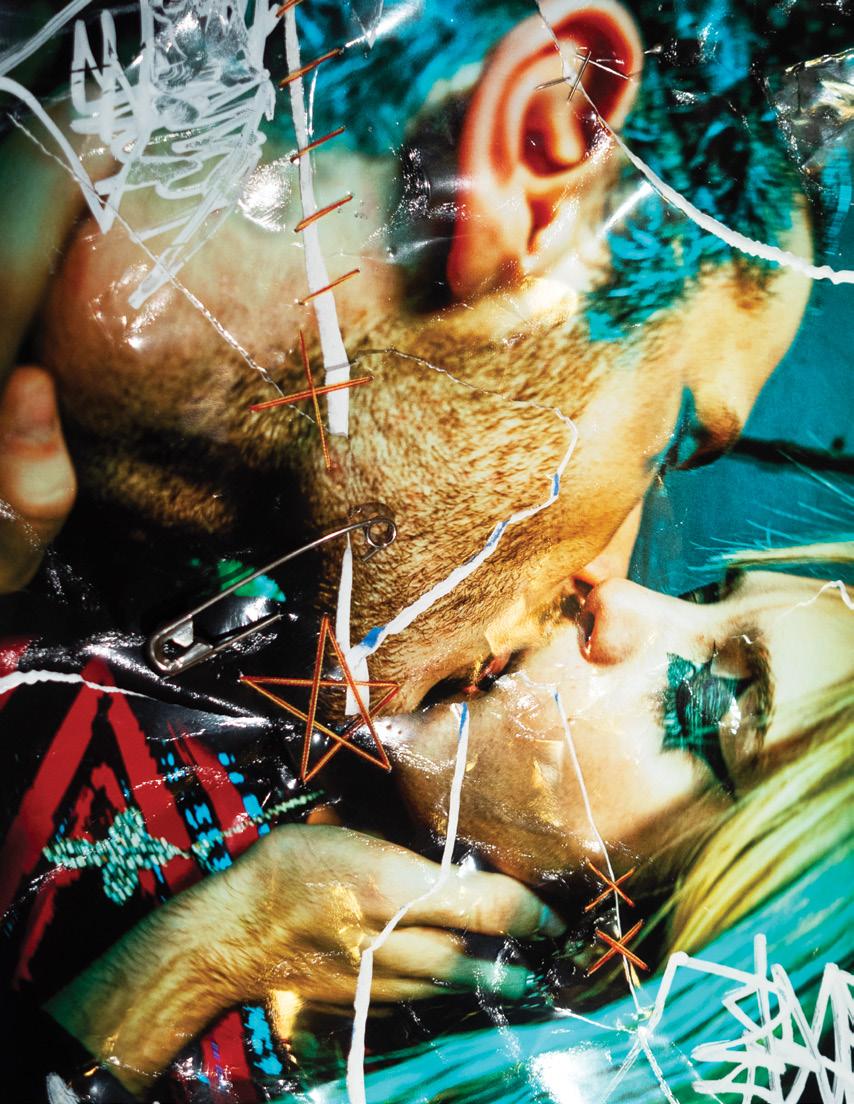 Models Addison Meek, Alexandre Spallone
Photography Katalina Enriquez, Stephanie Garcia, Ian Alvarez Ward
Design Larissa Aguiar, Dina Coletti, Chloe Girod, Liv Vitale
Models Addison Meek, Alexandre Spallone
Photography Katalina Enriquez, Stephanie Garcia, Ian Alvarez Ward
Design Larissa Aguiar, Dina Coletti, Chloe Girod, Liv Vitale

 Design Dina Coletti
Design Dina Coletti
THANK YOU TO ///
* OUR
July Art
Julieta Bea
Aaron Beschorner
Maia
Halle Burton Soph Coru Theo Devlin Justin Docal Cora Gilbert Carlos Gimenez Hailey Goldstein
Sofia Gurruchaga
Jo Johnson Noah Jones Mason Kuzmick
Adam Leme Anthony Perina Devon Limcangco Addison Meek
Angela Mueller Laasya Moparthy
Sebastian Padron Ty Parris Dayanna Peek Nico Prystawik
Lorella Quispe Messarina Vishwa Ramanakumar Raya
Valentina Del Rio Caroline Sachse Amelia Slayden Nihar Soman Alexandre Spallone Radhika Subramanian Charles Warren Lauren Whittier Dallas Young David Zhang
*
MODELS Baby J’s Balls Bar Flashbacks Recycled Fashions Hobby KK’s Convenience Store Possum Creek Skatepark
BUSINESSES / &



69
Photography Annika Thiim
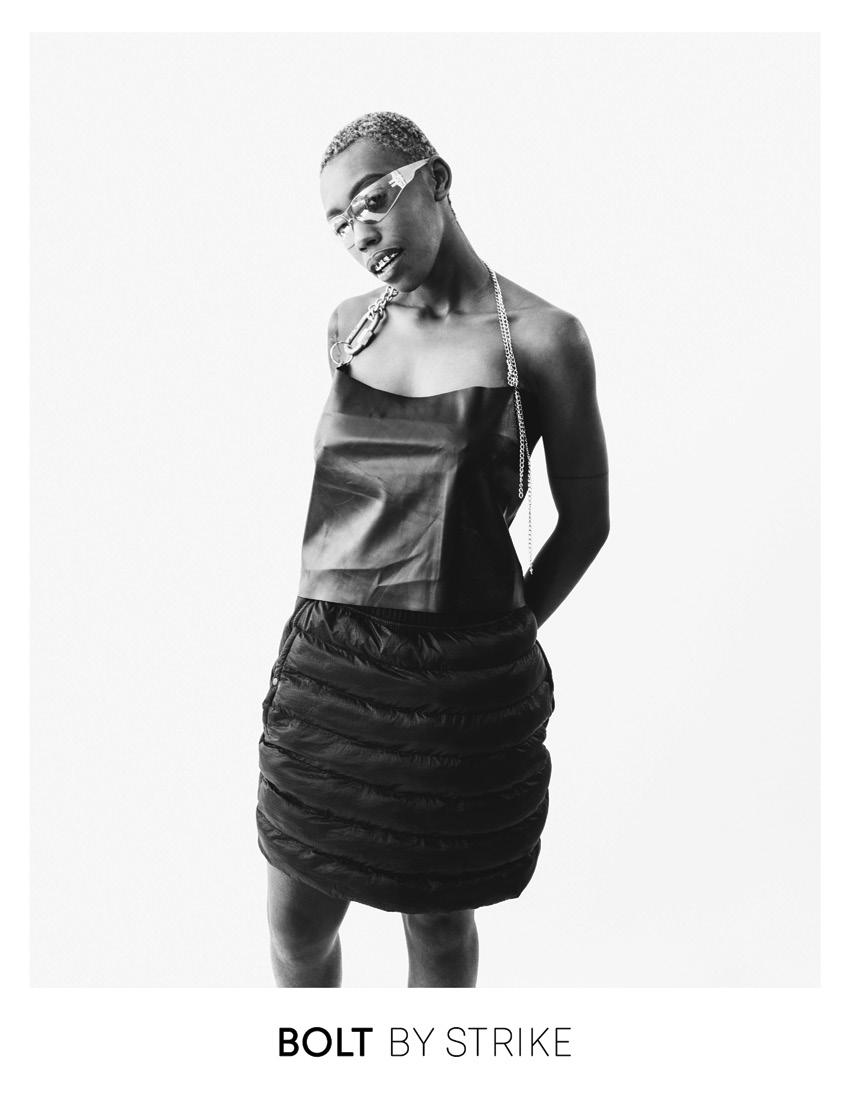 Model Dayanna Peek
Model Dayanna Peek
Fashion Liv Vitale
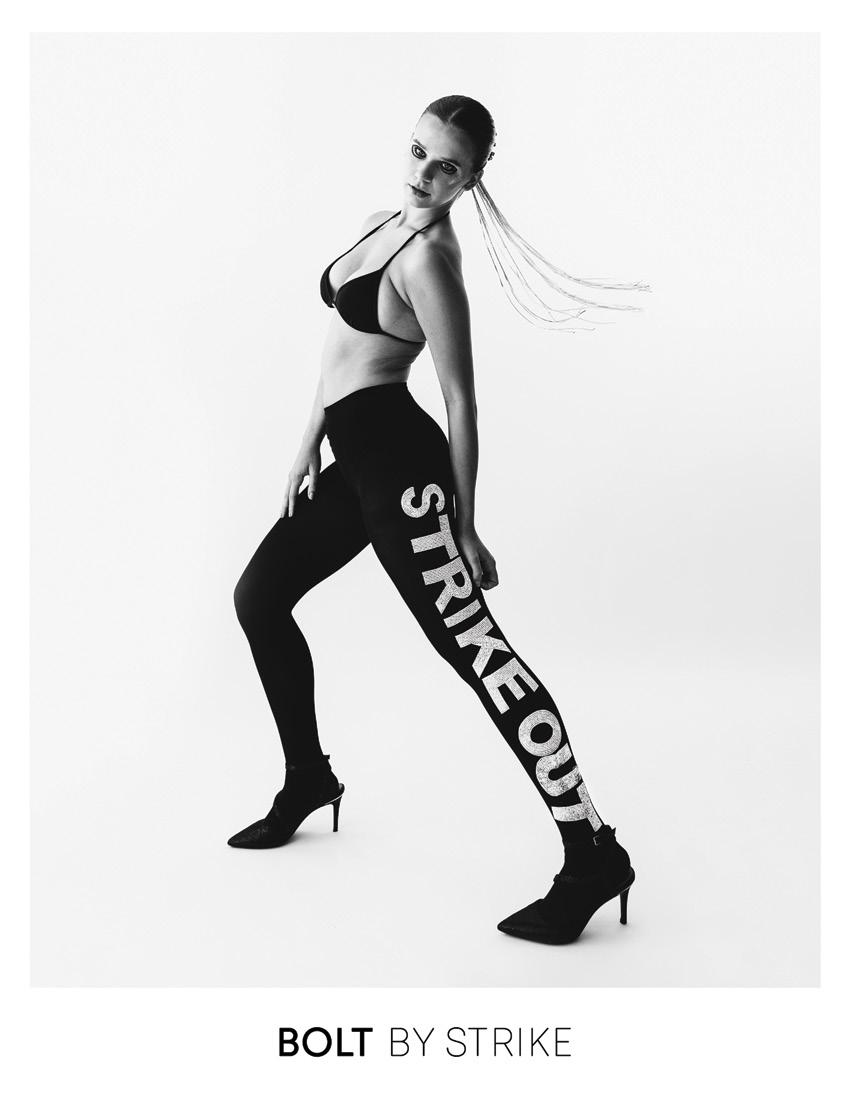 Model Amelia Slayden
Fashion Huntleigh Zhang
Photography Kat Rettino
Model Amelia Slayden
Fashion Huntleigh Zhang
Photography Kat Rettino


 Model Caroline Sachse
Fashion Aliya Delcastillo
Photography Natasha Badal, Stephanie Garcia
Model Caroline Sachse
Fashion Aliya Delcastillo
Photography Natasha Badal, Stephanie Garcia
 Model July Art
Fashion Mya Genuardi
Photography Annika Thiim
Model July Art
Fashion Mya Genuardi
Photography Annika Thiim






 Design Dina Coletti
Design Dina Coletti

 Models Soph Coru, Valentina Del Rio
Models Soph Coru, Valentina Del Rio
 Design Chloe Girod
Design Chloe Girod
 Model Maia
Photography Katalina Enriquez
Design Larissa Aguiar
Model Maia
Photography Katalina Enriquez
Design Larissa Aguiar



 Design Dina Coletti
Design Dina Coletti

 Model Sofia Gurruchaga
Fashion Tayler Ford
Photography Kat Rettino
Model Sofia Gurruchaga
Fashion Tayler Ford
Photography Kat Rettino
 Design Larissa Aguiar
Design Larissa Aguiar


 Models Noah Jones, Angela Mueller, Ty Parris, Anthony Perina, Raya, Dallas Young
Fashion Hobby
Photography Katalina Enriquez, Nicole Scharff, Ian Alvarez Ward Design Chloe Girod
Models Noah Jones, Angela Mueller, Ty Parris, Anthony Perina, Raya, Dallas Young
Fashion Hobby
Photography Katalina Enriquez, Nicole Scharff, Ian Alvarez Ward Design Chloe Girod


 Models Raya, Dallas Young Fashion Hobby
Models Raya, Dallas Young Fashion Hobby




 Design Jordan Corina
Design Jordan Corina


 Models Julieta Bea, Halle Burton, Soph Coru, Theo Devlin, Carlos Gimenez, Mason Kuzmick, Devon Limcangco, Addison Meek, Lorella Quispe Messarina, Vishwa Ramanakumar, Valentina Del Rio, Nihar Soman, Alexandre Spallone, Radhika Subramanian
Photography Brieanna Andrews, Natasha Badal, Katalina Enriquez, Stephanie Garcia, Ian Alvarez Ward Design Liv Vitale
Models Julieta Bea, Halle Burton, Soph Coru, Theo Devlin, Carlos Gimenez, Mason Kuzmick, Devon Limcangco, Addison Meek, Lorella Quispe Messarina, Vishwa Ramanakumar, Valentina Del Rio, Nihar Soman, Alexandre Spallone, Radhika Subramanian
Photography Brieanna Andrews, Natasha Badal, Katalina Enriquez, Stephanie Garcia, Ian Alvarez Ward Design Liv Vitale
 Model Hailey Goldstein
Fashion Jon Loferski
Photography Katalina Enriquez
Model Hailey Goldstein
Fashion Jon Loferski
Photography Katalina Enriquez
 Design Larissa Aguiar
Design Larissa Aguiar
 Design Chloe Girod
Design Chloe Girod
 Model Jo Johnson
Photography Nicole Scharff
Model Jo Johnson
Photography Nicole Scharff
 Model Nico Prystawik
Photography Annika Thiim Design Chloe Girod
Model Nico Prystawik
Photography Annika Thiim Design Chloe Girod

 Models Justin Docal, Cora Gilbert
Models Justin Docal, Cora Gilbert

 Model Laasya Moparthy
Fashion Tabi Higgins
Photography Brieanna Andrews
Model Laasya Moparthy
Fashion Tabi Higgins
Photography Brieanna Andrews
 Model David Zhang
Fashion Matthew Sloboda
Photography Annika Thiim
Model David Zhang
Fashion Matthew Sloboda
Photography Annika Thiim

 Design Rhythm Kumar
Design Rhythm Kumar
 Model Lauren Whittier
Fashion Keegan Hannan
Photography Annika Thiim
Model Lauren Whittier
Fashion Keegan Hannan
Photography Annika Thiim
 DANIELLA ALFONSO
Design Larissa Aguiar, Chloe Girod
DANIELLA ALFONSO
Design Larissa Aguiar, Chloe Girod

 Models Aaron Beschorner, Adam Leme, Sebastian Padron, Charles Warren
Photography Katalina Enriquez
Models Aaron Beschorner, Adam Leme, Sebastian Padron, Charles Warren
Photography Katalina Enriquez

 Models Noah Jones
Fashion Hobby
Photography Katalina Enriquez
Design Dina Coletti, Liv Vitale
Models Noah Jones
Fashion Hobby
Photography Katalina Enriquez
Design Dina Coletti, Liv Vitale

 Photography Ian Alvarez Ward
Photography Ian Alvarez Ward


 Models Addison Meek, Alexandre Spallone
Photography Katalina Enriquez, Stephanie Garcia, Ian Alvarez Ward
Design Larissa Aguiar, Dina Coletti, Chloe Girod, Liv Vitale
Models Addison Meek, Alexandre Spallone
Photography Katalina Enriquez, Stephanie Garcia, Ian Alvarez Ward
Design Larissa Aguiar, Dina Coletti, Chloe Girod, Liv Vitale

 Design Dina Coletti
Design Dina Coletti



 Model Dayanna Peek
Model Dayanna Peek
 Model Amelia Slayden
Fashion Huntleigh Zhang
Photography Kat Rettino
Model Amelia Slayden
Fashion Huntleigh Zhang
Photography Kat Rettino
